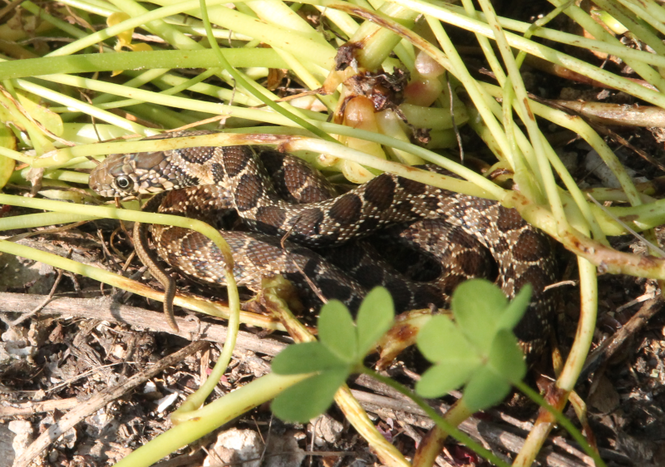 Juvenile Horse-shoe Whip Snake (RH)
Juvenile Horse-shoe Whip Snake (RH) Rubbing salt into the wound he not only used an old hat of mine I'd left in the house to catch it but went on to discover three more at a regular haunt of mine, La Janda (36.248878-5.835323; 36.24897 -5.83526 and 36.24921 -5.83508).
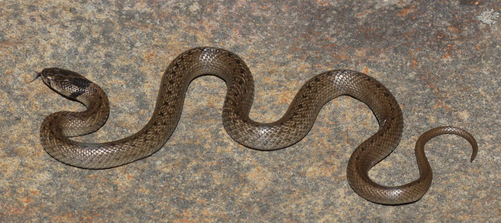 False Smooth Snake (RH)
False Smooth Snake (RH) 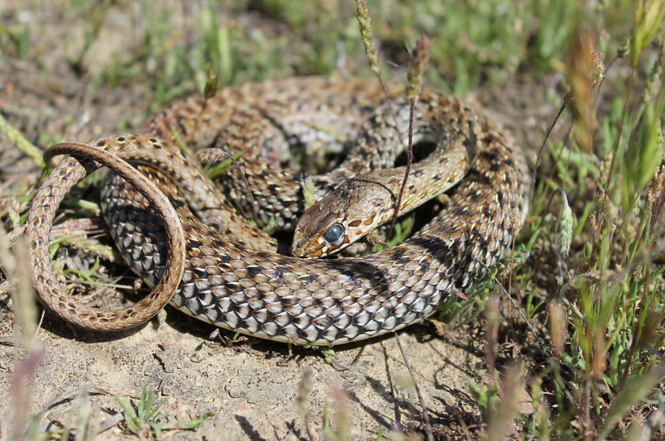 Montpellier Snake (RH)
Montpellier Snake (RH) 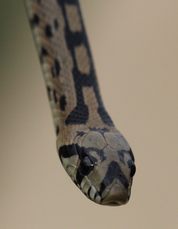 Juvenile Ladder Snake (RH)
Juvenile Ladder Snake (RH) Having established that I know less than I should about snakes, at least I do know that Ladder Snake (Rhinechis scalaris) gets its name from its markings.
Naturally Lawrie not only found them with ease at Embalse de Barbate, Barbate dam & La Janda (36.411624-5.740734 and36.41162, -5.74073) but also got a terrific photo of a juvenile showing the distinctive markings that give the species its name.
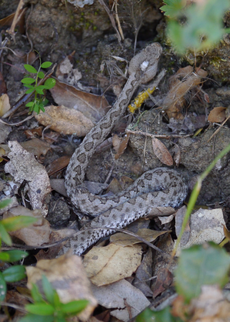 Lataste's Viper (JC)
Lataste's Viper (JC) Lawrie didn't manage to see all the snakes of the area although he did pretty well but I can't resist adding a photo of one missed - Lataste's Viper (Vipera latasti). I've seen a single young juvenile in the Molinos valley. It was a very small and somewhat sluggish which may be explained by the white spot on the head which seemed to be a wound or perhaps some sort of fungal growth.
They're also found in the pines that cloak the dunes at Rota and at Algaida, Barbate and elsewhere but are never easy to find. One tip, I'm told, is to view from a low level so that you see the silhouette rather than be confused by their cryptic camouflage.
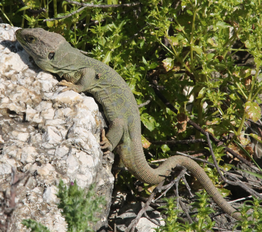 Occelated Lizard (RH)
Occelated Lizard (RH) Of the lizards the one you're most likely to see even if you're not really looking is Occelated Lizard (Timon lepidus) as they're bright green very large and not infrequently scuttle across the road on hot sunny days. I've seen them in many areas in the province although they seem to have a liking for unimproved a and often fairly rugged areas. Lawrie had them at two sites where I've found them relatively common - two at Bolonia and three at Barbate dam. However, unlike Lawrie, I've never managed to get a decent shot of one. They're usually a much brighter green than the individual shown here whose dullness is probably because it is about to shed its skin.
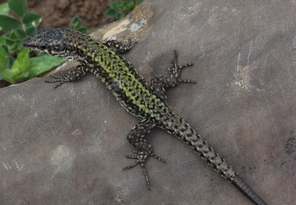 Wall Lizard (RH)
Wall Lizard (RH) As Lawrie confirmed, Spiny-footed Lizard (Acanthodactylus erythrurus) has a particular liking for light sandy soils and, like him, I've always found them particularly common in the Algaida area although I've seen them at a number of coastal sites. I find them strikingly handsome little beasts and not too difficult to photograph.
Iberian Wall Lizard (Podarcis hispanica) is another frequently seen reptile although Lawrie's visit made me appreciate just how much they prefer rocky areas and walls and just how common they are in the area. Unlike him I've never managed to get a decent photo!
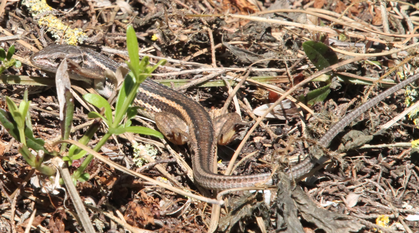 Large Psammodromus (RH)
Large Psammodromus (RH) 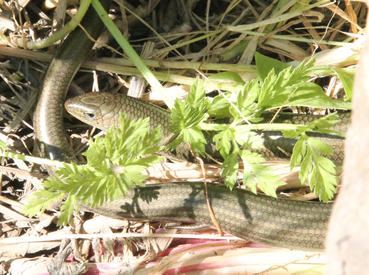 Three-toed Skink (RH)
Three-toed Skink (RH) 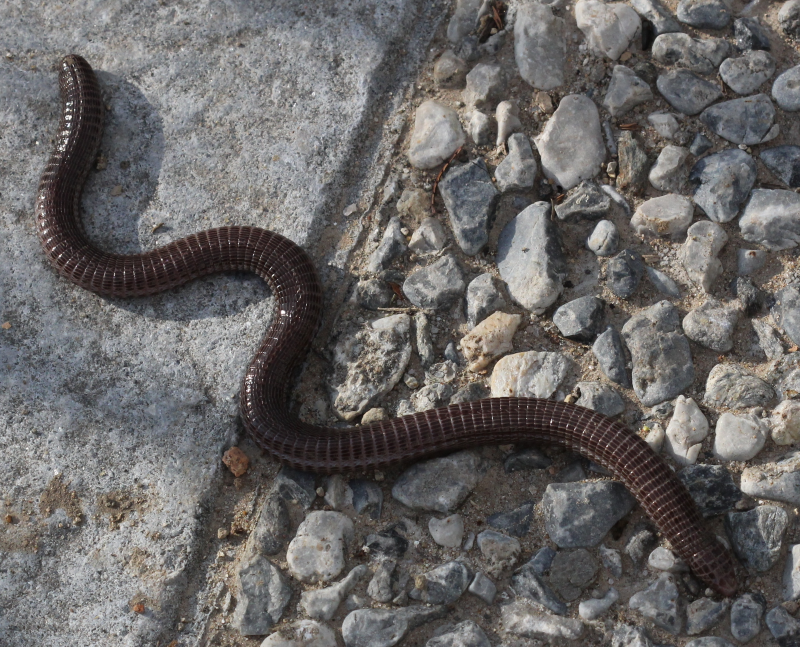 Iberian Worm Lizard (RH)
Iberian Worm Lizard (RH) 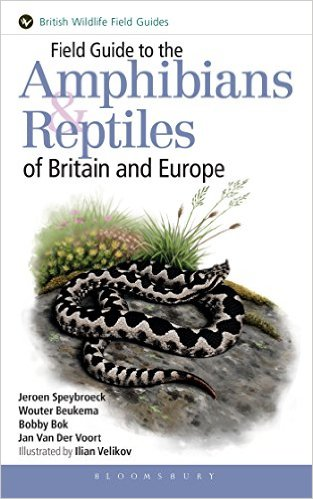 The definitive field guide .....? Out July 2016
The definitive field guide .....? Out July 2016 My rather lacklustre attempts to see and identify reptiles and amphibians in the area haven't been helped by the absence of a decent field guide to the group. At home I use a copy of “Reptiles and Amphibians in Colour” by Hans Hvass but, being over forty years old and with rather limited illustrations, it's far from ideal. In a burst of enthusiasm in 2009 I got a copy of a new photoguide to the group “New Holland Guide to the Reptiles and Amphibians of Europe" by Axel Kwet. It's a handy little book but I'm no fan of photoguides and coverage isn't comprehensive. I've been meaning to get the obvious choice, “Collins Field Guide to the Reptiles and Amphibians of Britain and Europe” (Arnold & Ovenden) for decades but as the list price has always been a bit steep (currently £29.95) I'd always hoped to get one second-hand. However, not having been comprehensively revised for well over a decade it's now dated and its taxonomy very much out of date. Fortunately, the cavalry is on its way in the form of a new Bloomsbury (Helm) book a “Field Guide to the Amphibians and Reptiles of Britain and Europe” by Jeroen Speybroeck et al and illustrated by Ilian Velikov which should be published in July (c£20). It promises an up-to-date taxonomy, including all the recent splits and discoveries, and appears to be beautifully illustrated. Hopefully, this book will help me to hone my identification skills. One other resource needs to be mentioned – the online version of Atlas y Libro Rojo de Anfibios y Reptiles de Espaňa - is a wonderful resource – see http://www.magrama.gob.es/es/biodiversidad/temas/inventarios-nacionales/inventario-especies-terrestres/inventario-nacional-de-biodiversidad/ieet_anfib_reptl_LR_indice.aspx
Many thanks once again to Lawrie Hills both for those of his photos that adorn this blog post and his expert input in improving my understanding of the local herpeto-fauna of Cadiz province. Thanks too to Lawrie's parents Richard & Cathy Hills for giving our little house in Alcala the good airing it so needed!
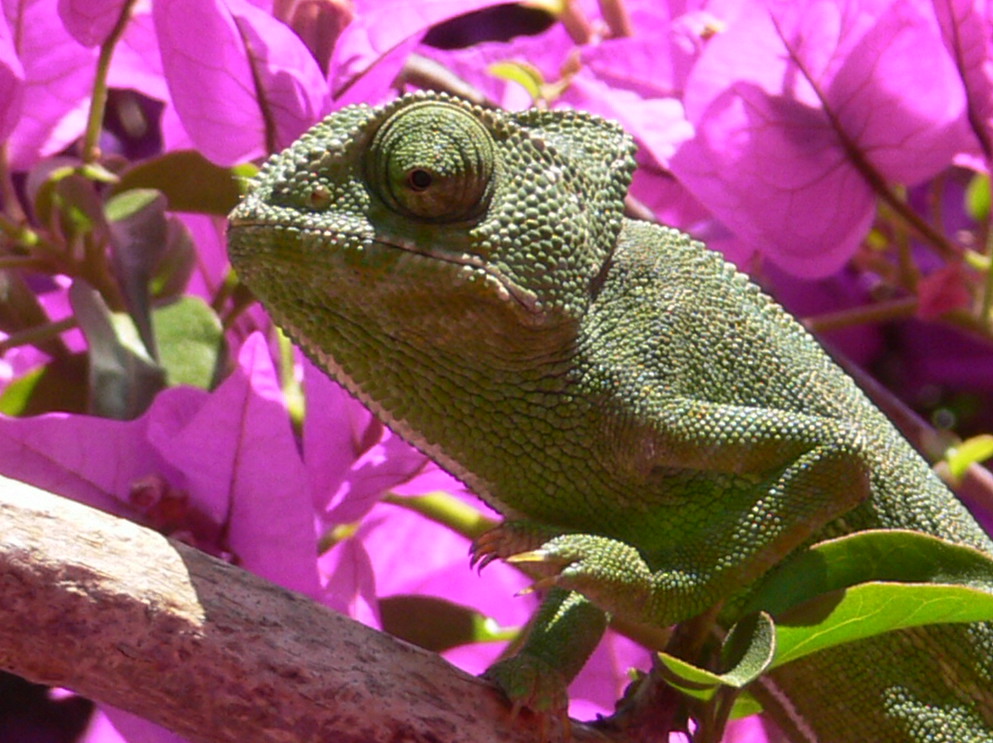
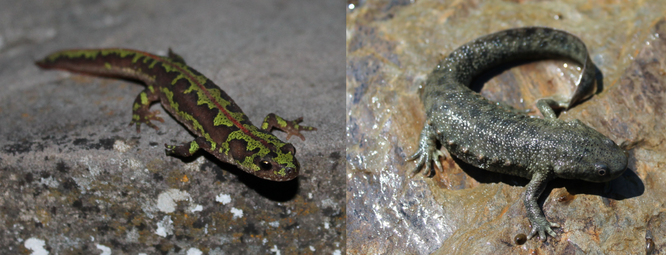
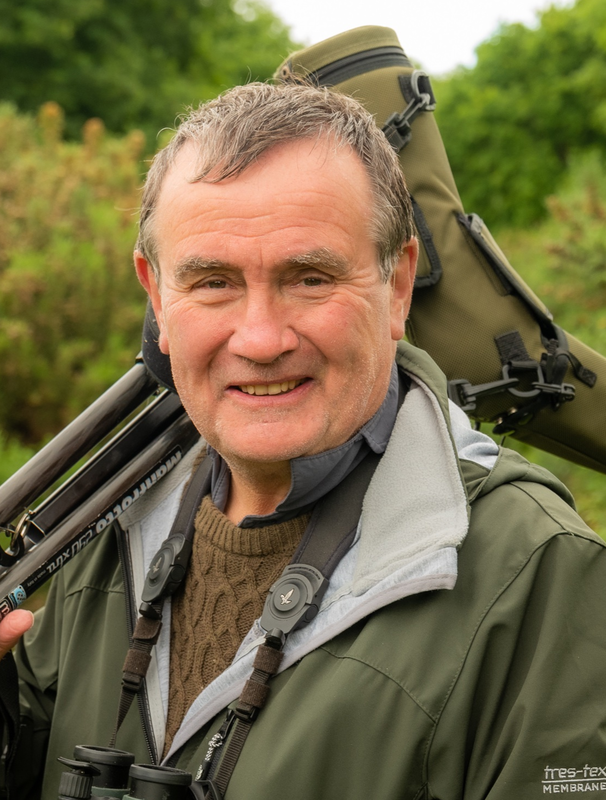
 RSS Feed
RSS Feed
